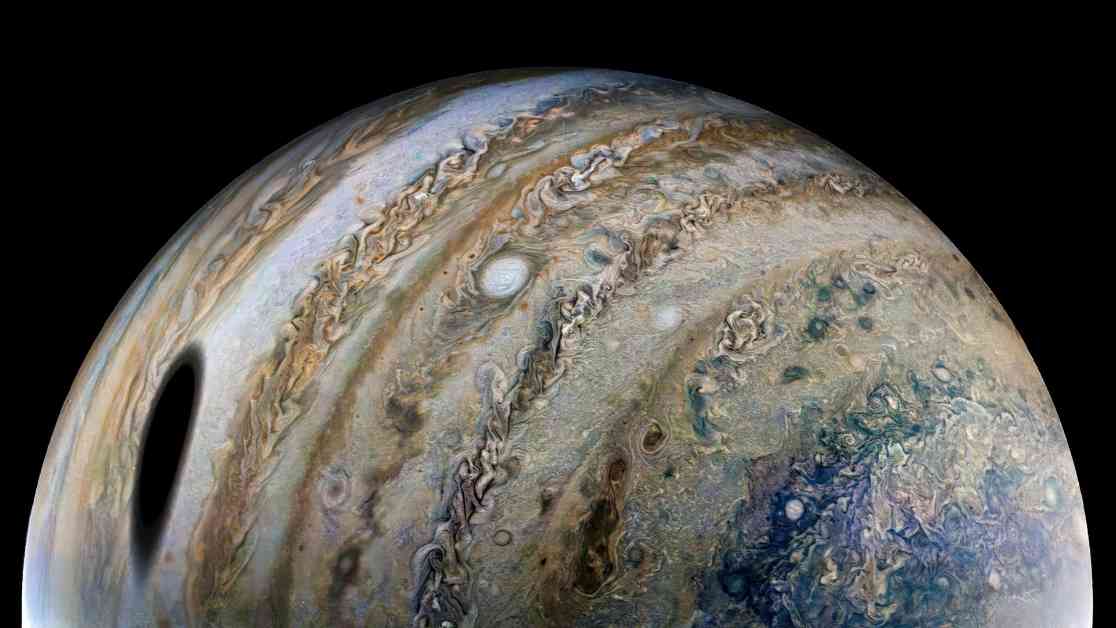Jupiter, the largest planet in our solar system, is famous for its massive storms. These storms are visible in the characteristic striped cloud bands that flow alternately east or west depending on latitude. Their speeds exceed 100 meters per second (360 kilometers per hour) at low latitudes and weaken to just a few tens of meters per second at higher latitudes. The winds on Jupiter are extremely dynamic and extend deep into the planet’s atmosphere. New detailed computer simulations from the Max Planck Institute for Solar System Research in Göttingen, led by Ulrich Christensen and Paula N. Wulff, suggest that these storms abruptly end 2000 kilometers below the cloud surface. In this zone, there appears to be a stable layer of gas that prevents further descent and ascent of material. The research group presented their findings in the journal „Proceedings of the National Academy of Sciences (PNAS).“
The storms on Jupiter have long been the subject of scientific investigations with various space probes, and currently, NASA’s Juno mission is exploring the gas giant. Measurements of Jupiter’s gravitational and magnetic fields suggest that the storms extend thousands of kilometers deep before weakening. However, Christensen and Wulff argue that an origin with shallower hurricanes is also possible. The team modeled the complex interplay of buoyancy, magnetic fields, and Coriolis forces in their simulations to a depth of 5600 kilometers, which is less than eight percent of Jupiter’s radius of 71,000 kilometers.
„Jupiter is an extremely extreme place; even simulating the processes in this outer layer is a huge challenge and places huge demands on computing power,“ says Ulrich Christensen. Hydrogen and helium, the main components of the gas giant, are in gaseous form in the upper cloud layers. However, at greater depths and pressures, they transition into a liquid, electrically conductive phase. Below the point where they reach the conductivity of seawater, the winds weaken. According to the simulations of the Göttingen team, this must happen at a depth of about 2000 kilometers to align with the findings on Jupiter’s magnetic field. The characteristics of this stable, low-wind depth layer are currently only vaguely understood. It is likely that hydrogen and helium are stratified separately there, inhibiting mixing processes.
The extreme conditions within Jupiter’s deeper atmosphere, however, rule out any on-site verification by space probes. Models of this nature could also be applied to similar celestial bodies like Saturn or comparable exoplanets. However, the existence of such a stable layer is initially hypothetical based on computer simulations and requires further investigation.
These new insights into Jupiter’s storms provide a deeper understanding of the complex dynamics at play on the gas giant and offer potential applications for studying other planets and celestial bodies in the future. Jupiter continues to fascinate scientists and researchers with its unique and extreme weather patterns, making it a subject of ongoing exploration and study.












